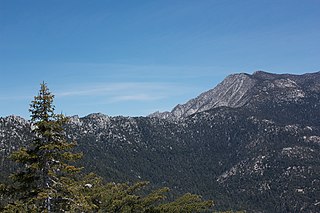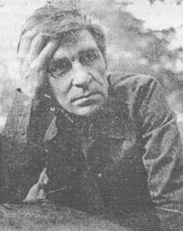Related Research Articles

The San Jacinto Mountains are a mountain range in Riverside County, located east of Los Angeles in southern California in the United States. The mountains are named for one of the first Black Friars, Saint Hyacinth, who is a popular patron in Latin America.
Peter Cowie is a British film historian and author of more than thirty books on film. In 1963 he was the founder/publisher and general editor of the annual International Film Guide, a survey of worldwide film production, which he continued to edit for forty years.

Miroslav "Mika" Antić was a Serbian poet, film director, journalist and painter. He was a major figure of the Yugoslav Black Wave. He had six children.

The Devil's Backbone is a 2001 gothic horror film directed by Guillermo del Toro, and written by del Toro, David Muñoz, and Antonio Trashorras. Set in Spain, 1939, during the final year of the Spanish Civil War, the film follows a boy who is left in an orphanage operated by Republican loyalists and haunted by the ghost of a recently-deceased boy. It stars Marisa Paredes, Eduardo Noriega, Federico Luppi, Irene Visedo, Fernando Tielve, and Íñigo Garcés. Released in Spain by Warner Sogefilms on 20 April 2001, the film received highly positive reviews from critics.
Luis Induni was an Italian film actor of the 1950s 1960s and 1970s.
Douglas Cowie was a Scottish footballer who played for Dundee, Greenock Morton and the Scotland national team. He played initially as a central defender but later converted to a left half.
Johnny Richards was an American jazz arranger and composer scoring numerous sound tracks for television and film. He was a pivotal composer/arranger for cutting edge, adventurous performances and recording sessions by Stan Kenton's big band in the 1950s and early 1960s; such as Cuban Fire!, Kenton's West Side Story and Adventures in Time.
Mervyn Hugh Cowie, was a conservationist who pioneered wildlife protection and the development of tourism throughout East Africa.

Where No Vultures Fly is a 1951 British adventure film directed by Harry Watt and starring Anthony Steel and Dinah Sheridan. It was released under the title Ivory Hunter in the United States. The film was inspired by the work of the conservationist Mervyn Cowie. The film's opening credits state that "the characters in this film are imaginary, but the story is based on the recent struggle of Mervyn Cowie to form the National Parks of Kenya." The title Where No Vultures Fly denotes areas where there are no dead animals. A sequel, West of Zanzibar, was released in 1954.
Francisco Reiguera was a Spanish actor who is best known for playing the title role in Orson Welles’ unfinished film version of Don Quixote. He also appeared in the films Simon of the Desert (1965), Major Dundee (1965) and Guns for San Sebastian (1968).

Cascales Canton is a canton of Ecuador, located in the Sucumbíos Province. Its capital is the town of Cascales. Its population at the 2001 census was 7,409.

Margarita Corona (1911–1983) was a Brazilian-born Argentine film actress. Corona was born in Rio de Janeiro, but moved as a small child to Argentina. After making her debut in Savage Pampas, she appeared in twenty-eight films and television episodes. She was the sister of the actor Juan Corona.

Héctor Méndez (1913–1980) was an Argentine film actor.
Atilio Rinaldi was an Argentine film editor. He worked on over ninety films during his career.
Forty Degrees in the Shade is a 1967 Argentine-Spanish comedy film directed by Mariano Ozores starring Gracita Morales, Antonio Ozores and Manuel Velasco.
Carmen de Lirio was a Spanish film actress.
José Antonio Rojo (1923-1995) was a Spanish film editor. He worked on more than two hundred films during his career.

José Jaspe was a Spanish film actor.
Volodja Semitjov (1912–1985) was a Russian-born screenwriter, journalist and novelist who settled and worked in Sweden. The son of the writer Vladimir Semitjov, the family emigrated to Sweden in 1923. His younger brother was Eugen Semitjov.
References
- ↑ Cowie p.24